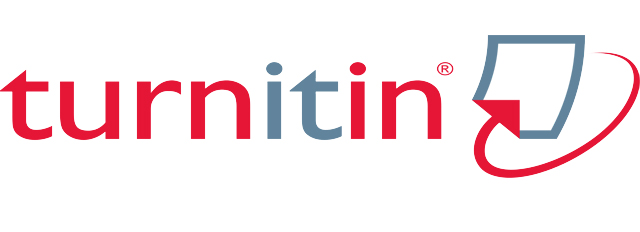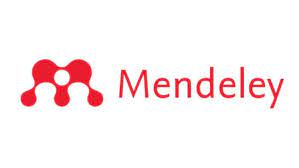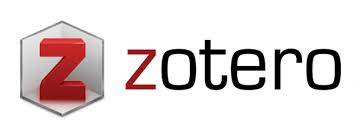KECERNAAN IN VITRO PAKAN KOMPLIT YANG MENGANDUNG LEVEL ALGA HIJAU (Ulva lactuca) YANG BERBEDA SEBAGAI PENGGANTI RUMPUT LAPANGAN
Abstract
The objective of this experiment was to investigate the effect of substitution of U. lactuca to field grass on the in vitro digestibility of complete feed. Parameters measured were dry matter and organic matter digestibility, as well as total VFA and NH3 concentrations. This study was following a Completely Randomized Design (CRD) with 6 treatments and 4 replications, i.e: R0 = 60% field grass + 40% concentrate, R1 = 48% field grass + 40% concentrate + 12 % U. lactuca, R2 = 36% field grass + 40% concentrate + 24% U. lactuca, R3 = 24 % field grass + 40% concentrate + 36% U. lactuca, R4 = 12% field grass + 40% concentrate + 48 % U. lactuca, R5 = 60% U. lactuca + 40% concentrate. The results showed that treatments had significant effect (P<0.01) on DMD and OMD as well as the total VFA and NH3 concentrations. The result of statistical analysis showed that U. lactuca was able to completely replace grass in the complete feed because DMD and OMD were higher (67,99% and 70,04%) from control treatment (65,38% and 66,73%). While total VFA and NH3 concentration were significantly (P<0.01) higher in R3 (147.66 mM and 9.80 mM) compared to other treatments. It was concluded that the optimum level of the inclusion of U. lactuca in replacing field grass was 36%.
ABSTRAK
Penelitian dilakukan dengan tujuan untuk menguji pengaruh level U. lactuca sebagai pengganti rumput alam terhadap kecernaan in vitro pakan komplit. Parameter yang diukur adalah kecernaan bahan kering dan bahan organik serta konsentrasi VFA total dan ammonia (NH3). Penelitian ini disusun berdasarkan Rancangan Acak Lengkap (RAL) dengan 6 perlakuan dan 4 ulangan, yaitu: R0 = 60% rumput alam + 40% konsentrat, R1 = 48% rumput alam + 40% konsentrat + 12 % U. lactuca, R2 = 36% rumput alam + 40% konsentrat + 24% U. lactuca, R3 = 24 % rumput alam + 40% konsentrat + 36% U. lactuca, R4 = 12% rumput alam + 40% konsentrat + 48% U. lactuca, R5 = 60% U. lactuca + 40% konsentrat. Hasil penelitian menunjukkan bahwa perlakuan berpengaruh sangat nyata (P<0,01) terhadap KcBK dan KcBO serta konsentrasi VFA total dan NH3. Hasil analisis statistik menunjukkan bahwa U. lactuca dapat sepenuhnya menggantikan rumput alam dalam pakan komplit karena KcBK dan KcBO lebih tinggi (67,99% dan 70,04%) dari perlakuan kontrol (65,38% dan 66,73). Sedangkan konsentrasi VFA total dan NH3 meningkat mencapai puncaknya pada perlakuan R3 (147.66 mM dan 9.80 mM). Berdasarkan hasil penelitian ini, disimpulkan bahwa level kecernaan optimum U. lactuca menggantikan rumput alam adalah sebesar 36%.
Downloads
References
Arora SP. 1995. Pencernaan Mikroba Pada Ruminansia. Cetakan Kedua. Gadjah Mada University Press.Yogyakarta.
Apaydin G, Aylikcil V, Cengizl E, Saydam M, Kup N, Tirasoglu E. 2010. Analysis of Metal Contents of Seaweed (U. lactuca) from Istanbul, Turkey by EDXRF. 5 (2) Turkish Journal of Fisheries and Aquatic Sciences 10:215-220.
Bendary MM, Bassiouni MI, Ali MF, Gaafar HM, Shamas AS. 2013. Effect of premix and seaweed additives on productive performance of lactating friesian cows. International Research Journal of Agricultural Science and Soil Science (ISSN: 2251-0044) 3(5) pp. 174-181.
Diler I, Tekinay AA, Guroy D, Kut B, Murat S. 2007. Effects of Ulva rigida on the Growth, Feed Intake and Body Composition Of Common Carp, Cyprinus carpio L. Journal of Biological Science 7(2): 305-308.
Guroy BI, Kran CHÙRÙK, Derya, Roy G, Feyza SANVER, Ahmet Adem TEKÙNAY. 2007. Effect of U. rigida and Cytoseira barbata Meals and a Feed Additive on Growth Perfomance, Feed Utilization and Body Composition of Nile Tilapia, Oreochromis niloticus. Journal Veteriner Animal Science. 2007; 31(2): 91-97.
Hind Z, Arhab R, Christelle B, Hacène B, Beckers Y. 2014. Chemical and biological evaluation of the nutritive value of Algerian green seaweed Ulva lactuca using in vitro gas production technique for ruminant animals. International Journal of Advanced Research (2014), 2 (4) ,916-925.
Jelantik IGN, Mullik ML, Leo-Penu C, Jeremias J, Copland R. 2008b. Improving calf survival and performance by supplementation in Bali cattle. Australian Journal of Experimental Agriculture. 48 (6-7): 950-953.
Jelantik IGN, Mullik ML, Copland R. 2009. Cara Praktis Menurunkan Angka Kematian dan Meningkatkan Pertumbuhan Pedet Sapi Timor Melalui Pemberian Pakan Suplemen. Undana Press. Kupang.
Jelantik IGN, Nikolaus TT, Leo-Penu C, Jeremias J. 2015. Herbage production and nutritive value of some forage legumes as calf supplement. Proceeding 3rd International Seminar on Animal Industry. Pp. 141-144.
Khamseekhiew B, Liang JB, Wong CC, Jelan ZA. 2001. Ruminal and intestinal digestibility of some tropical legume forages. Asian-Aus. Journal Animal Science, 14;321-325.
Lobley GE, Connell, A, Lomax, MA, Brown, DS, Milne, E, Calder, A.G, Franingham, DAH. 1995. Hepatic Ditoxification of Ammonia in The Ovine Liver: possible consequences for amino acid catabolism. British Journal of Nutrition 73: 667-685.
Manu AE. 2013. Produktivitas Padang Pengembalaan Sabana Timor Barat. Prosiding Semnas II. HITPI. Pasture 3 (1) :25-29.
McDonald P, Edward RA, Greenhalgh JFD, Morgan CA. 2002. Animal Nutrition. 6th Edition. Prentice Hall, London.
Mullik ML. 2006. Strategi Suplementasi untuk meningkatkan Efesiensi Sintesis Protein Mikroba Rumen pada Ternak Sapi yang Mengkonsumsi Rumput Kering Tropis. Jurnal Ilmu Ternak Veteriner Vol. 11 No. 1 Th. 2006.
Mullik ML, Permana B. 2009. Inproving Growth Rate of Bali Cattle Grazing Native Pasture in West Season by Supplementing High Quality Forages. Jurnal Ilmu Ternak Veteriner 14 (3) Th. 2009:192-199.
Naiulu H. 2016. Pemanfaatan Alga Hijau (Ulva lactuca) sebagai Basis Pakan Komplit Penggemukan Ternak Sapi Bali. Tesis. Proram Pasca Serjana. Universitas Nusa Cendana. Kupang.
Orskov, E. R. 2001. The Feeding of Ruminants Pronciples and Practice. Second Edition. Chalcombe Publications. United Kingdom. p 17-53.
Preston TR, Leng RA. 1995. Matching Ruminant Production System with Available Resources in The Tropic and Sub-Tropic. Penambul Books, Armidale.
Raharjo ATW, Wardhana S, Widiyastuti T. 2013. Pengaruh Imbangan Rumput Lapang-Konsentrat Terhadap Kecernaan Bahan Kering dan Bahan Organik Secara In Vitro. Jurnal Ilmiah Peternakan 1(3): pp. 796-803.Satpati GG, Pal R. 2011. Biochemical Compisition and Lipid Characterization of Marine Green Alga U. rigida a Nutrational Approach. Jou. Alga Biomass Utln. 2(4):10-13.
Sutardi T, Sigit NA, Toharmat T. 1993. Standarnisasi mutu protein bahan makanan ruminansia berdasarkan parameter metabolismenya oleh mikroba rumen. Laporan Penelitian. Fakultas Peternakan. Institut Pertanian Bogor. Bogor.
Tillman AD, Hartadi H, Reksohadiprodjo S, Prawirokusumo S, dan Lebdosukodjo S. 1998. Ilmu Makanan Ternak Dasar. Gadjah Mada UniversityPress, Yogyakarta.
Wijayanti E, Wahyono F, Surono. 2012. In Vitro Digestibility and Fermentability of Nutrients of Complete Feed with Different Levels of Bagasse. Animal Agricultural Journal. 1 (1) : 167-179.
 Noh Abani(1*)
Noh Abani(1*)





.jpg)





